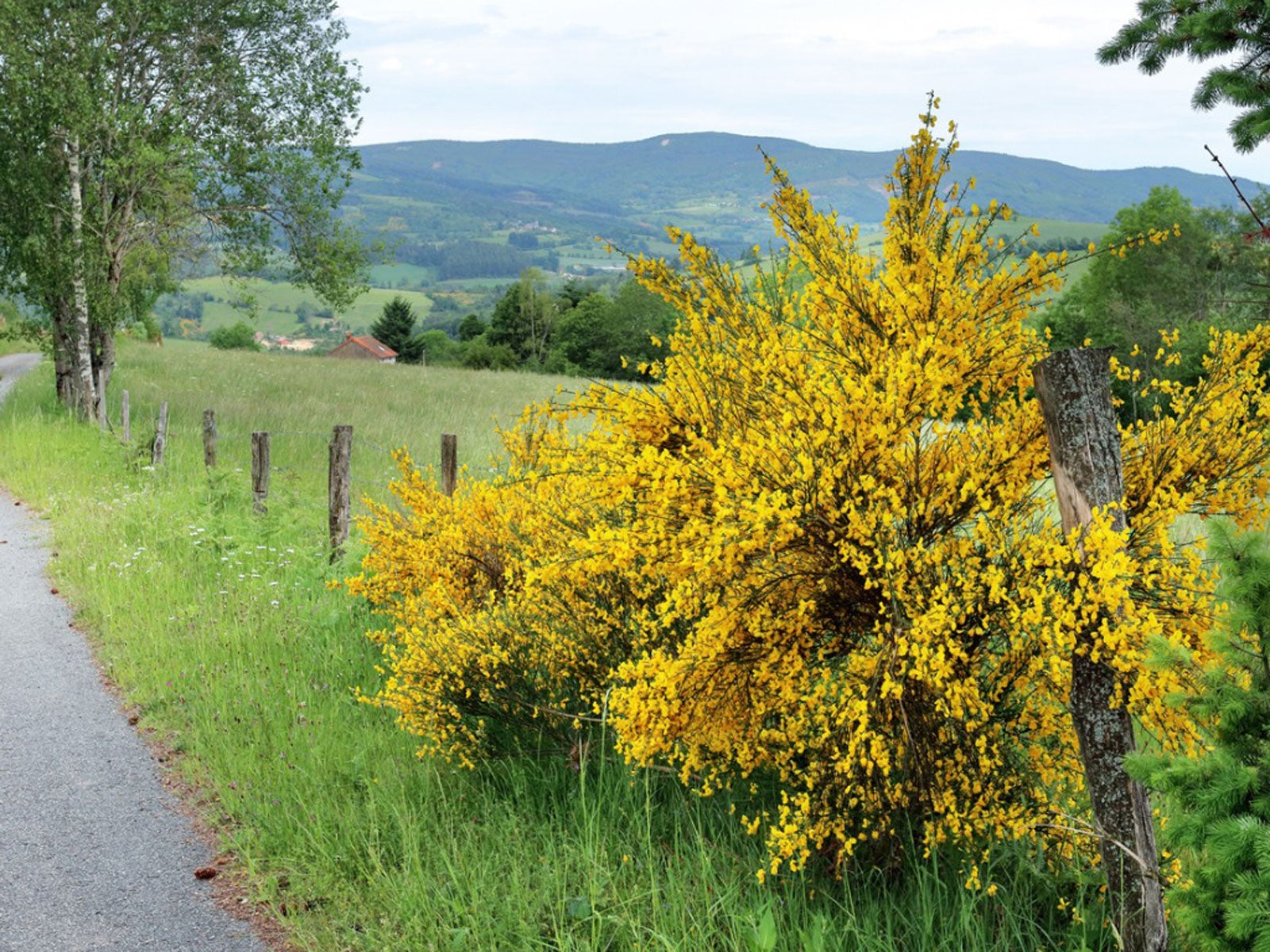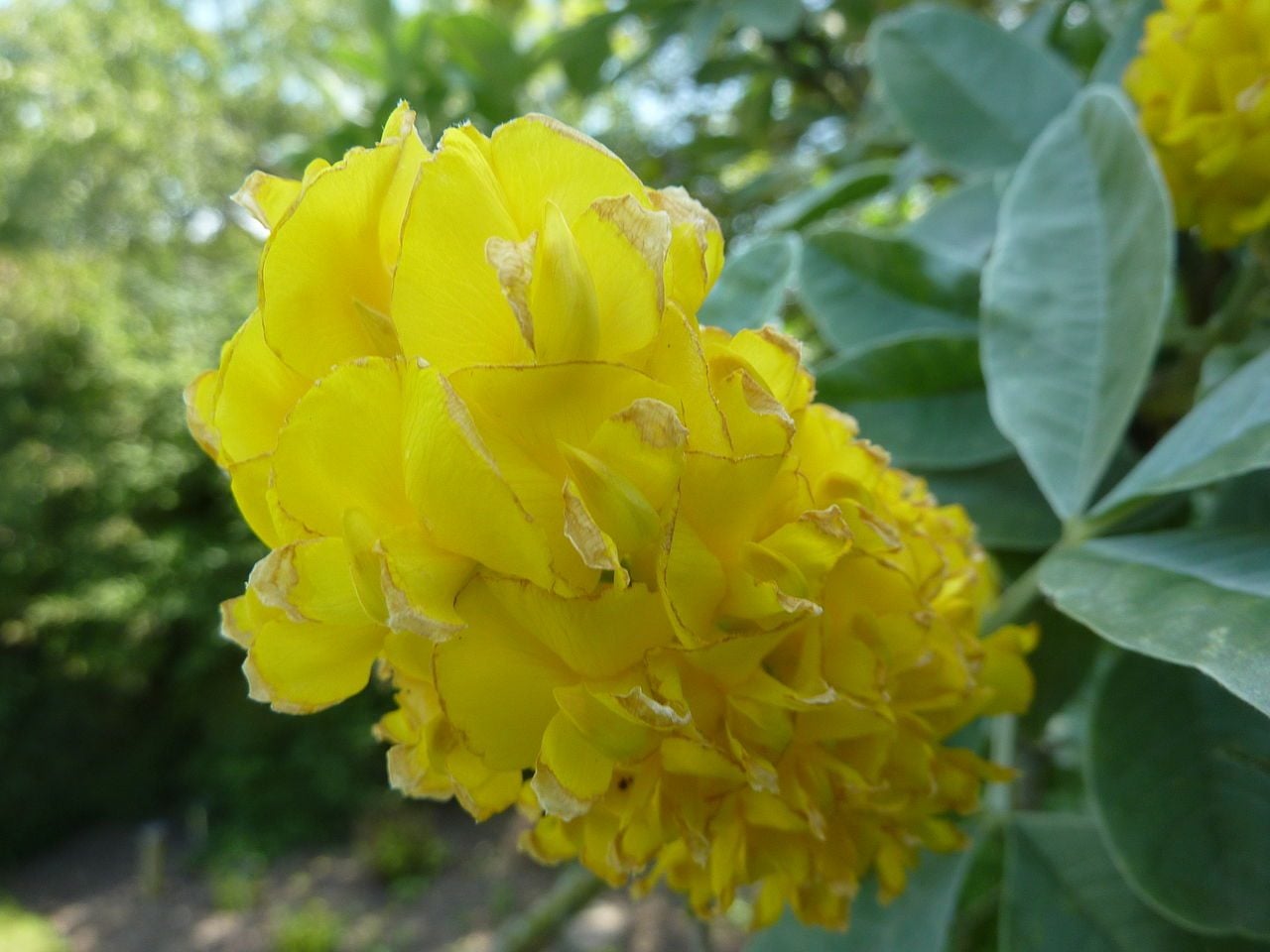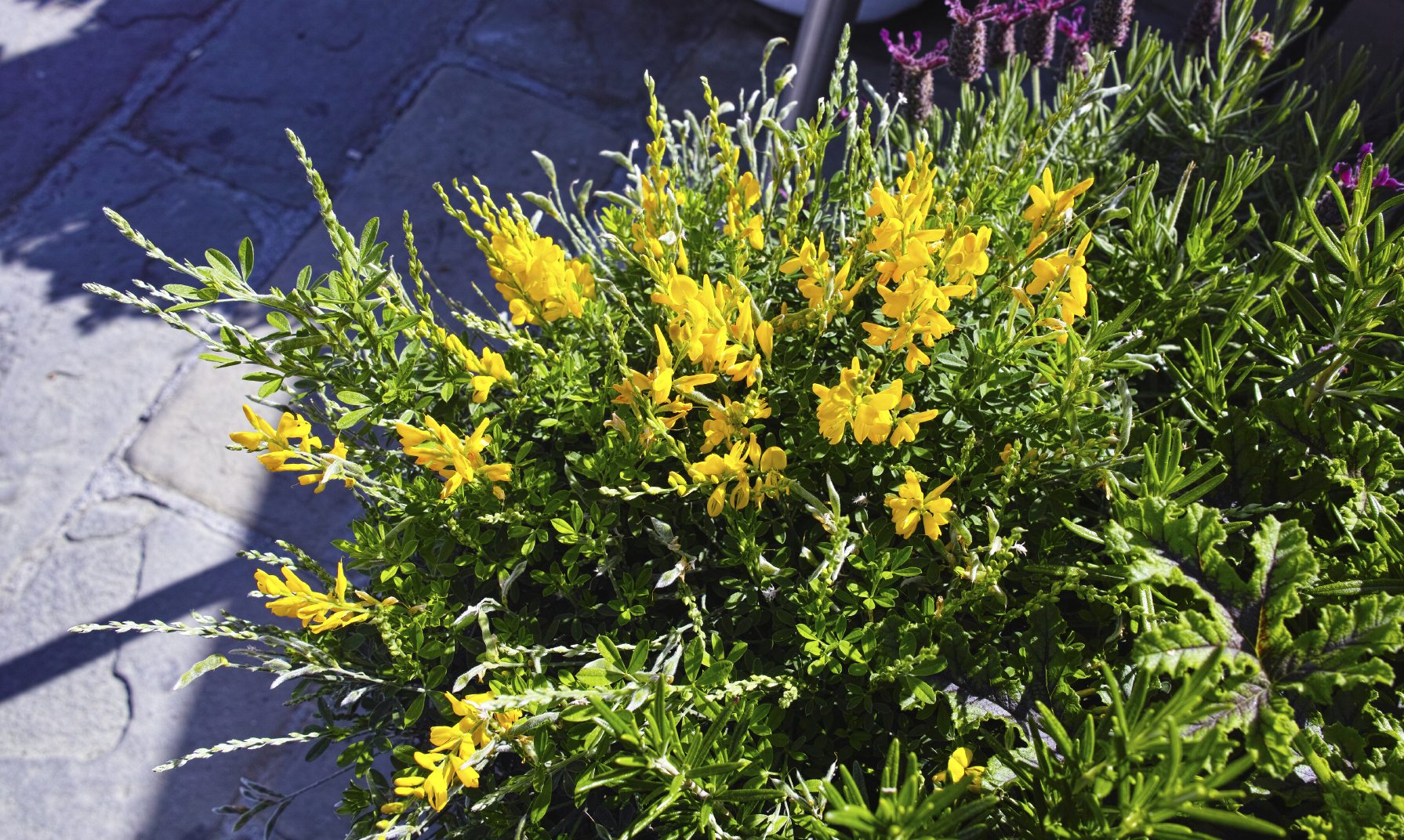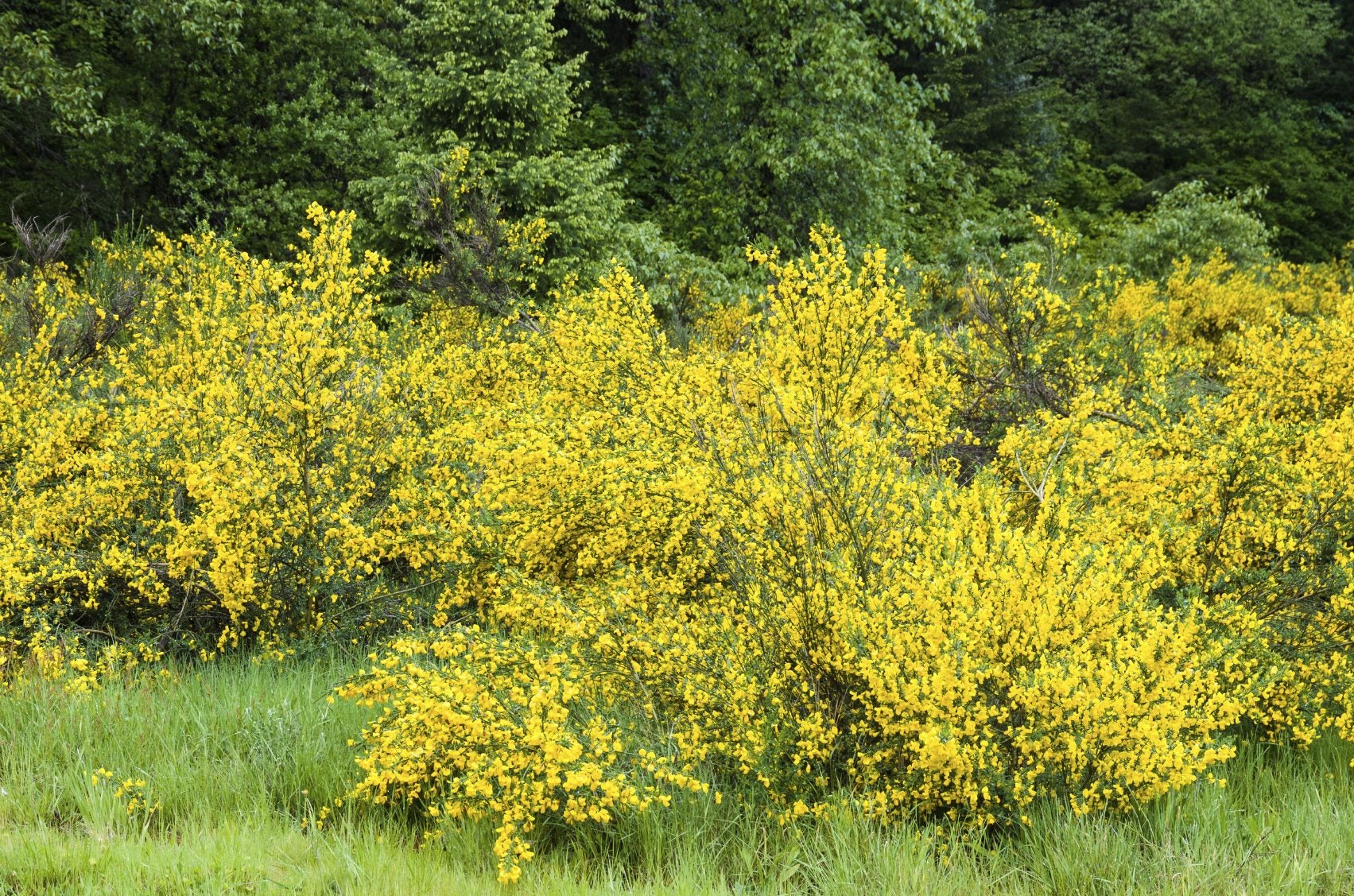Information On Broom Shrubs: Controlling Broom Shrubs In The Landscape


Broom plants, such as Scotch broom (Cytisus scoparius), are common sights along highways, in meadows and in disturbed areas. Most broom shrub varieties were originally introduced as ornamentals but some species became useful as erosion control. Broom shrub plants may get 9 feet (2.5 m.) tall and produce some spectacular bloom displays in spring. The plant can get a bit invasive in some areas though, but a little information on broom shrubs will help you control the plants while still enjoying their ease of care and brilliant blooms.
About Broom Shrub Plants
Brooms form small to large shrubs that grow very quickly. The plants have become quite invasive with seeds spreading and sprouting quickly. This speedy development makes the plants a threat to native species. Brooms produce wide branching root systems and thick tenacious stems. The stems die back in dry weather and produce flammable “torches” of plant material. There are several broom shrub varieties but the most common are the Scotch and Spanish, which were introduced as erosion control. Brooms can get 3 to 10 feet (92 cm. - 3 m.) tall with angled stems and small simple to trifoliate leaves. Stem shape separates the broom shrub varieties. Scotch broom has a five-sided stem while French and Portuguese have 8 and 10 angled stems. Spanish broom is so closely angled that it appears almost round. The bright yellow flowers have a pea-pod like appearance which yield to black or brown pods filled with dark green seeds in late summer.
Where Do Broom Shrubs Grow?
Rather than ask, where do broom shrubs grow, you should ask, where don't they grow. The only space that is not pleasing to broom shrubs is a soggy, boggy and shady location. They establish quickly in disturbed areas, but also in grassland and forests. Their adaptability and rapid growth can lead to an invasive tendency in some areas. Controlling broom shrubs with mechanical pulling and cultural management can help in areas with low infestations. This can be difficult on plants like Scotch broom, which may have a 6-foot (1.8 m.) long taproot. Chop out the plant in spring when the soil is moist and has some give. You can also cut the green foliage and let the stems dry out. Then follow with controlled burning to prevent the plant from re-sprouting.
Controlling Broom Shrubs with Chemicals
Instead of burning, you can paint stumps with a systemic herbicide. You can also apply a foliar spray, which will translocate through the stoma in the leaves, down into the vascular and root system of the plant. The best time to spray is between April to July when leaves are dry and temperatures are 60 to 80 degrees Fahrenheit (15 to 26 C.). Note: Any recommendations pertaining to the use of chemicals are for informational purposes only. Chemical control should only be used as a last resort, as organic approaches are safer and more environmentally friendly. Note: Although broom plants produce attractive, sweet-pea like blooms, they have become highly invasive in many areas. It is important to check with your local extension office before adding the plant or its relatives to your landscape to see if allowable in your area.
Gardening tips, videos, info and more delivered right to your inbox!
Sign up for the Gardening Know How newsletter today and receive a free copy of our e-book "How to Grow Delicious Tomatoes".

Bonnie Grant is a professional landscaper with a Certification in Urban Gardening. She has been gardening and writing for 15 years. A former professional chef, she has a passion for edible landscaping.
-
 Looking For Plants To Give You The Soft And Fuzzies? Try These 5 Fuzzy Leaf Plant Options
Looking For Plants To Give You The Soft And Fuzzies? Try These 5 Fuzzy Leaf Plant OptionsLovers of texture, drama, silver foliage and tactile plants will adore these special sensory garden additions. These fuzzy leaf plant options will leave you all aglow
By Susan Albert
-
 Get Ready For A Summer Of Hummers! Grow These Full Sun Hummingbird Plants and Flowers
Get Ready For A Summer Of Hummers! Grow These Full Sun Hummingbird Plants and FlowersIf you’re lucky enough to enjoy a sunny backyard, make sure you are maxing out on your pollinator opportunities and grow these full sun hummingbird plants and flowers
By Tonya Barnett
-
 Pineapple Broom Plant Care: Moroccan Pineapple Broom Plants In Gardens
Pineapple Broom Plant Care: Moroccan Pineapple Broom Plants In GardensLooking for a reliable, small, hardy tree or shrub with fragrant flowers? Then look no further than the Moroccan pineapple broom. Learn more about this interesting plant and how to care for it in the following article. Click here for additional info.
By Gardening Know How
-
 Sweet Broom Shrub Care – How To Plant Broom Shrubs
Sweet Broom Shrub Care – How To Plant Broom ShrubsWhile many people consider the plant a noxious weed, it is an attractive plant. In the proper space, growing sweet broom shrub will add a nice wild touch to the landscape and enhance the area with its scented blossoms. Click here for more info.
By Bonnie L. Grant
-
 Scotch Broom Pruning: When And How To Trim A Scotch Broom Plant
Scotch Broom Pruning: When And How To Trim A Scotch Broom PlantPruning a scotch broom shrub must be done conservatively and at the correct season. Take a look at this article for more information about scotch broom maintenance and pruning. Click here to learn more.
By Teo Spengler
-
 Scotch Broom Control: Getting Rid Of Scotch Broom Shrub From The Yard
Scotch Broom Control: Getting Rid Of Scotch Broom Shrub From The YardThough sometimes attractive in the landscape, the scotch broom shrub is a noxious weed. Scotch broom control is difficult and often time-consuming, but worth the effort. Learn more in this article.
By Becca Badgett